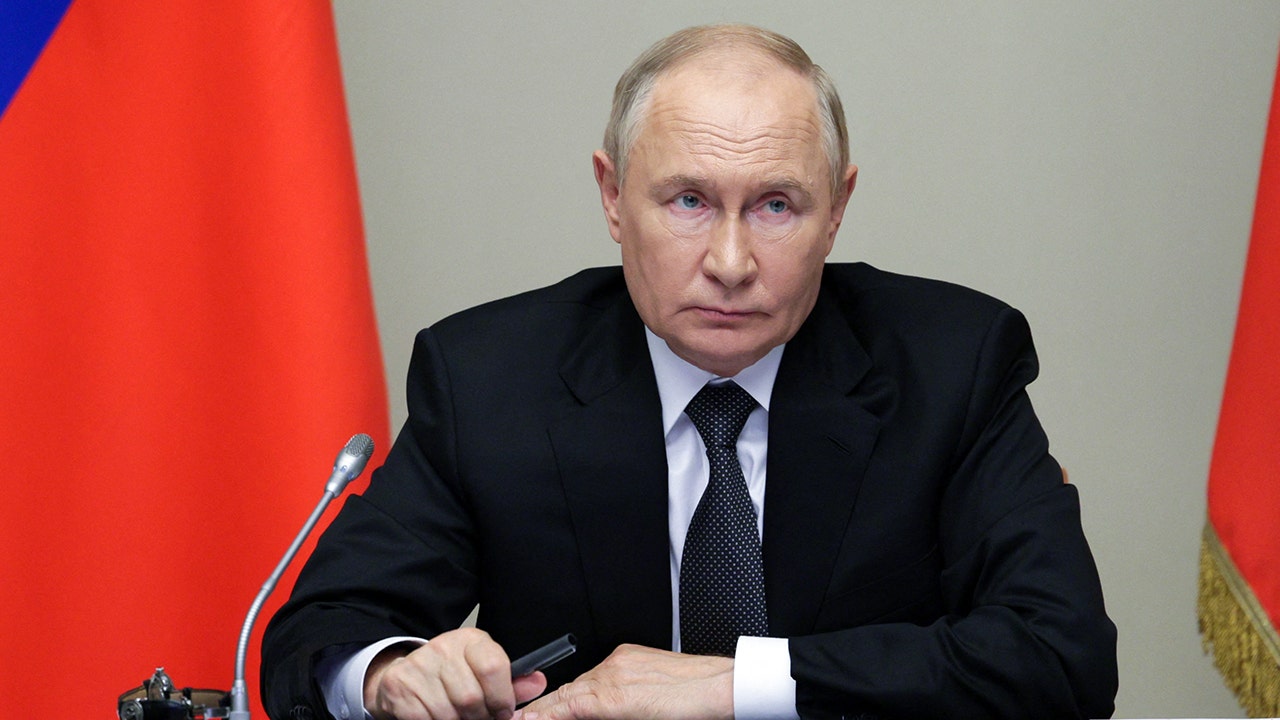World
Israel to Ukraine to Bulgaria: Which countries receive US military aid?

The United States is poised to restart the shipment of 500-pound bombs to Israel that were held up earlier this year after a pause on their export following the brutal offensive in Gaza’s southern city of Rafah, officials told multiple media organisations on Wednesday.
In early May, Biden had paused a single shipment of bombs after Israel ordered the evacuation of Rafah on May 6 and the Israeli military began “targeted” ground operations one day later. Since then, United Nations agencies estimate that about a million Palestinians – many of whom have already been displaced multiple times from other areas of Gaza – have been forced to flee from Rafah.
Throughout Israel’s military campaign on Gaza, the US has not only allowed weapons sales to Israel. It has also provided large amounts of other military aid – both financially and, it is believed, through supportive military operations.
In April, US Congress approved a major round of military aid to both Israel and Ukraine. A total of $95bn included $60bn (63 percent) for Ukraine, $26.4bn (28 percent) for Israel and $8.1bn (9 percent) for the Asia Pacific region relating to a possible threat from China.
The US is the world’s biggest provider of military aid. So, what exactly is military aid and which countries benefit the most?
Is military aid the same as foreign aid? What’s the difference?
The US provides more foreign aid worldwide than any other country.
Foreign aid is the total amount of aid that is allocated to countries outside the US, including both economic (including humanitarian) and military aid. In 2022, military aid accounted for 14 percent of US foreign aid, according to ForeignAssistance.gov, a non-partisan US organisation which makes foreign assistance data available to the public.
In general, most foreign aid falls under the categories of economic and humanitarian assistance. This includes monetary aid to support longer-term economic development in poorer countries, emergency aid needed due to natural or human-induced disasters, and financial aid meant to support US political interests – usually in the form of military aid or military support.
In 2023, foreign aid to Israel from the US was mostly military aid, while foreign aid to other countries, such as Zimbabwe and Afghanistan, was 100 percent economic aid.
Humanitarian aid and military aid can come into conflict with each other. On May 31, Stacy Gilbert, a Department of State official who served in the State Department’s Bureau of Population, Refugees and Migration resigned from the Biden administration due to the administration’s refusal to accept that Israel has been blocking humanitarian assistance to Gaza. The resignation was prompted by a national security memorandum justifying the billions in military aid being sent to Israel.
In an interview with PBS News Hour, Gilbert stated, “So, when the report came out on May 10, and I read the conclusion, especially the conclusion that Israel was not blocking humanitarian assistance, I decided I would resign, because that was absolutely not the opinion of subject matter experts in the State Department, USAID, the humanitarian community, organisations that are working in Gaza.”

Which countries receive the most military aid from the US?
Israel
Since the founding of Israel in 1948, it has been the largest cumulative recipient of US foreign aid, receiving about $300bn (adjusted for inflation) in total economic and military assistance.
Roughly $220bn (74 percent) of that has been in the form of military aid, while the remaining $80bn (26 percent) has been economic aid.
Since 2008, Israel has received mostly military aid with economic aid accounting for less than 1 percent of total US aid to Israel.
Ukraine
Ukraine has also received a large amount of military aid from the US. Most recently, a $300m emergency military aid package was approved in March to replace depleted military stock in its continuing war with Russia.
Since Russia invaded Ukraine more than two years ago, the US Congress has approved five aid packages for the country totalling $175bn. The most recent legislation was passed in April 2024.

Egypt
The US has also provided military aid to Egypt since the 1979 Egypt-Israel peace treaty to assist with shoring up Egypt’s defensive capabilities and countering “terrorism”. Egypt received $1.3bn of US military aid in 2023.
However, in recent years, the US has begun to withhold military aid from Egypt, citing the country’s human rights record. In September, the US withheld $85m of the $320m total military aid that had been set aside for Egypt. US Senator Chris Murphy, a Democrat, also called for more military aid to be withheld.
“The administration rightly decided to withhold that first tranche – $85m tied to the release of political prisoners – because there’s just no question there has not been enough progress,” Murphy said.
While Egypt has released more than 1,600 political prisoners since early 2022, he said, “During that same time, they have jailed 5,000 more. So for every political prisoner that Egypt releases, three more are jailed. That’s one step forward, and three steps back.”
Taiwan and Lebanon
A source close to the Biden administration stated that the $85m of military aid withdrawn from Egypt would be redirected, with $55m earmarked for Taiwan and $30m for Lebanon.
Bulgaria
The US also provides military aid to Bulgaria. Under the US-Bulgarian Defense Cooperation Agreement, a security partnership signed in April 2006 giving the US military access to the use of Bulgarian military facilities, the US has provided more than $238m to Bulgaria over the past five years to support military training, cybersecurity and military equipment upgrades.
Why does the US provide so much military aid to Israel?
The US has provided aid to Israel since 1948. While this was initially primarily in the form of economic aid, it massively increased military aid in 1973, when Egypt and Syria launched a surprise attack on Israel – known as the Yom Kippur War – to regain territory including historic Palestine, the Sinai desert and the Golan Heights, that they had lost in 1967.
Under the codename “Operation Nickel Grass”, US President Richard Nixon ordered an emergency supply of military aid to Israel in October 1973, helping Israel to push the Egyptians back across the Suez Canal.
At the time, Nixon said to his national security adviser and secretary of state, Henry Kissinger: “Send everything that will fly.”
Israel would claim victory three weeks later – on October 25 – and a ceasefire was declared.
In the 1950s, the former prime minister and one of the founders of Israel, David Ben-Gurion, had already begun popularising the idea that Israel should be a military superpower in the Middle East with what was termed “qualitative military edge”.
A policy of ensuring Israel would indeed have such an advantage over its neighbours was codified into US law under the Naval Vessel Transfer Act of 2008, which ensured that every security assistance request from the Israeli government would always be evaluated in light of the US policy to uphold Israel’s qualitative military edge.
Former assistant secretary for the US Bureau of Political-Military Affairs, Andrew Shapiro, explained the crux of this “qualitative military edge” in a 2011 speech at the Washington Institute for Near East Policy.
He said, “The cornerstone of America’s security commitment to Israel has been an assurance that the United States would help Israel uphold its qualitative military edge. This is Israel’s ability to counter and defeat credible military threats from any individual state, coalition of states, or non-state actor, while sustaining minimal damages or casualties.”
Two weeks after the October 7 attacks in southern Israel by Hamas last year, President Biden also referred to this “qualitative military edge” in a speech.
He stated, “The security package I’m sending to Congress and asking Congress to do is an unprecedented commitment to Israel’s security that will sharpen Israel’s qualitative military edge, which we’ve committed to.”

When and why did the US start providing overseas military aid?
As early as September 1940, before the US officially entered World War II, the US was already providing large-scale military supplies and other assistance to the Allied nations in a bid to shore up its own security and to buy time to prepare for war itself.
Through the Lend-Lease programme, signed by President Franklin D Roosevelt in 1941, the US provided much of the military aid received by the United Kingdom and other countries already fighting Germany and Japan until the US finally joined the war in December that same year.
At the time, Secretary of War Henry L Stimson told the Senate Foreign Relations Committee during the debate over lend-lease: “We are buying … not lending. We are buying our own security while we prepare. By our delay during the past six years, while Germany was preparing, we find ourselves unprepared and unarmed, facing a thoroughly prepared and armed potential enemy.”
In 1961, however, President Dwight D Eisenhower warned about the dangers which could arise if the US over-extended military aid to other countries during his televised farewell address.
In that speech, Eisenhower said, “In the councils of government, we must guard against the acquisition of unwarranted influence, whether sought or unsought, by the military-industrial complex. The potential for the disastrous rise of misplaced power exists and will persist.”
His particular fear was that US foreign military expenditure would overshadow domestic priorities, as the costs of the arms race with the Soviet Union mounted.
He continued, “We must never let the weight of this combination endanger our liberties or democratic processes. We should take nothing for granted. Only an alert and knowledgeable citizenry can compel the proper meshing of the huge industrial and military machinery of defence with our peaceful methods and goals, so that security and liberty may prosper together.”
Does the US also provide military support as part of military aid?
Military support is often part of military aid. For example, as well as providing military aid to Israel since the start of its war on Gaza nine months ago, US special operations forces have also been operating to assist in locating Israeli captives, The New York Times reported in October last year.
It has yet to be confirmed if these forces are still operating in Israel or whether these forces are assisting Israel with matters other than finding the captives.
“Oftentimes, it’s special ops and command, essentially from behind the scenes, something like a raid on a so-called terrorist compound. And it’s using the host country’s security forces. But the US special ops will be in the field,” Stephanie Savell, senior researcher at the Watson Institute for International and Public Affairs and co-director of the Costs of War project at Brown University, told Al Jazeera.
In her November 2023 report titled United States Counterterrorism Operations Under The Biden Administration 2021-2023, Savell found that the US had conducted counterterrorism operations in 78 countries, with the US training and assisting foreign security forces in 73 of those countries, mostly in the Middle East, Africa and South America.
“Counterterrorism is a still very active justification for a lot of US military and US State Department activity abroad,” Savell told Al Jazeera. “It’s an excuse, basically, for different kinds of ground presence and different kinds of partnerships and different kinds of activities and training and funding. And that hasn’t gone away despite the fact that US security strategy is now geared almost entirely in name towards great power competition with Russia and China.”







